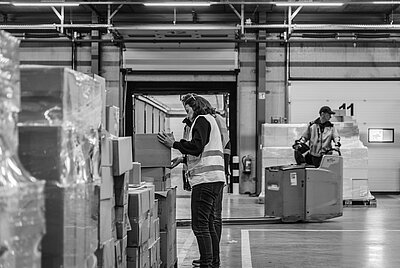Personalise, everywhere
Back in 2020, McKinsey and Company highlighted how companies that personalise customer experience across offline and digital, can achieve up to a 15% revenue increase. And this is backed up by evidence from Google that shows omnichannel strategies drive an 80% higher rate of incremental store visits. If you’re wondering how to drive footfall to physical stores, personalisation is key to your omnichannel approach.
Think with Google recently created Project BOX, which benchmarked five key omnichannel customer experience principles across 71 North European brands. And coming out top for personalisation was sports retailer, Decathlon.
Alexandre Velge, Leader Onsite Customer Experience, Decathlon Belgium, says: “When it comes to offering a truly personal experience to your customers, it’s important to understand their individual needs. Asking them the right questions and building customer profiles allow you to offer them the most appropriate products, solutions or services.”
Personalisation can take many forms for retailers. For Decathlon, a simple question on their online bike repair form means that the in-store staff are ready to help solve the customer’s particular problem as soon as they arrive at the store.
For other stores, it could be emailing a customer discount code for some of their frequently purchased items or offering customisation options to products in which they are interested.
Stock visibility
Seeing your inventory in real-time takes your customer service, and experience, to an exceptional level.
Since the pandemic, consumers expect agility on how and where they shop with 73% describing themselves as channel agnostic. And brands that blend their approach to sales see huge rewards for doing so. As customers’ expectations around a blended and seamless shopping experience grow, you can encourage them to spend across channels and have an experience that is personalised to them.
Danish drug store chain, Matas, has discovered that stock visibility has had an impact on exactly that. Brian Andersen, Group Digital Director at Matas, noted: “We make it easy to see availability. We integrated live inventory information on our web store to show if a product is in stock in your local shop - this has resulted in almost 50% of our online orders being picked up in our stores.”
This fluidity offers customers the chance to shop how they want and incorporates an online and face-to-face experience, which we know many shoppers prefer.
In-store technology
Google’s Project Box highlighted that only 30% of retailers are using in-store technology like QR codes, barcodes, and Near Field Communication (NFC) to enable customers to access more product information.
And this is echoed by research from McKinsey & Company, which states that ‘Only a few retailers have built true omnichannel offerings, harnessed data at scale, and implemented agile ways of working throughout their organisations’.
Swedish electronics retailer, NetOnNet, is one of these.
Sofie Struwe, Chief Commercial Officer at NetOnNet, says: “Customers can find out all they need to know about a product from our digital offerings: whether that’s pricing, availability, or delivery options. And we know that most of our customers have started online because almost 90% of those coming into the store make a purchase.”
The company’s use of in-store technology, specifically QR codes and NFCs, lets their customers easily purchase items as they walk around the store, and it can arrange home delivery for them in a seamless step.
Embedding technology in-store, whether it helps customers make a purchase, gives them more information about it or shows them what it could look like in their home, helps to move the customer seamlessly along their buying journey.
And what about those omnichannel practices that leave the customer feeling cold? More traditional, linear thinking is behind a lot of them, which include:
Disconnected channels
Having your channels in silos, and not communicating with each other or sharing data will make it harder for your customers to attain a seamless experience. Without aligning all your platforms and touch points (social media, website, in-store, and warehouses), the buying process can seem fragmented and frustrating to a customer who can be easily turned off.
Difficult payment processes
If you’re not allowing multiple payment options or locations, then you’re failing to provide a dynamic and now, very much expected experience for customers. Consumers want choice - whether that’s to pay online and pick up in-store, reserve online and pay in-store, or pay via monthly instalments. Having disconnected payment processes will limit your growth.
Thinking omnichannel is linear
Omnichannel is a continuous loop of nurturing and engagement that doesn’t stop, especially once a purchase has been made. Not offering post-purchase support like order tracking, helpful tips, advice and complementary products and discounts will reduce the chance of repeat purchases and brand loyalty.
Thinking of your warehouses and stores independently
Omnichannel encourages you to consider all your stock as one. Being unable to identify where your stock is, see how much you have and convey up-to-date information to your customers, is a fast way to lose them on the buying journey.
Accelerate your omnichannel journey and speak to our team on +31 (0) 88 494 20 80 or email us at online@worldpack.eu


